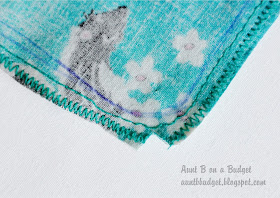Sometimes you need a meal that is quick to cook, makes a ton of food, and is cheap to make.
Who am I kidding?
Not sometimes.
Most of us need meals like this almost every week night!
Chow mein's a great way to stretch your food buck. It's wonderful refrigerator Velcro: You can add whatever leftover meat you happen to have on hand, or you can make a perfectly satisfying meal without any meat at all.
Mushrooms chow mein is our favourite vegetarian version of the dish. Mushrooms are rich in glutamates (big umami!) and have a satisfyingly meaty flavour and texture that will have even the most devoted meat eater in the house enjoying this meal.
To make mushroom chow mein, you'll need:
- sunflower oil (or another neutral flavoured vegetable oil)
- toasted sesame oil
- 6 to 8 cups of sliced mushrooms (I used crimini)
- 1/2 to 1 teaspoon poultry seasoning
- granulated garlic, to taste
- 1 pound fresh chow mein noodles
- 2 eggs
- 1-1/2 cups thinly sliced onion
- 1-1/2 cups shredded cabbage
- 1-1/2 cups mung bean sprouts
- 1-1/2 cups grated carrot
- 2 cups of vegetable stock
- approximately 1/4 cup soy sauce
- 1 heaping Tablespoon corn starch
- salt and pepper to taste
Begin by putting a large pot of water for the noodles.
As soon as the water is on, begin cooking the mushrooms. In a large pot, heat a mixture of about 2 Tablespoons of sunflower oil and 2 teaspoons of toasted sesame oil over medium-high heat.
When oil begins to ripple, add in the mushrooms. Give them a good stir. (They'll soak up the oil like a sponge and you want the flavour of the sesame oil distributed throughout.)
Sprinkle the poultry seasoning and a generous amount of granulated garlic over the mushrooms and give them another stir. Continue cooking, stirring every few minutes.
The mushrooms will give off a fair it of liquid. Keep cooking and stirring until the liquid evaporates and the mushrooms begin to brown.
Once the mushrooms are browned, season them to taste with salt and pepper, transfer them to a heat proof bowl, and keep them warm in the oven.
When the water in the noodle pot comes to a boil, add a generous amount of salt (it should taste like the sea) and cook the chow mein noodles according to the package directions.
(Chinese tradition favours using long noodles - a symbol of longevity - but I find the long noodles tend to clump together, making it hard to stir in the other ingredients without using an excess of oil. Before cooking the noodles, I run my knife through them, making three or four crosswise cuts and three or four lengthwise cuts, to shorten the noodles to a more manageable length.)
Drain the cooked noodles and rinse them with cold water. Set them aside.
Beat the eggs and pour them into an oiled omelette pan or frying pan that has been pre-heated over medium heat. Twirl the pan so that the eggs form a thin sheet over the bottom of the pan.
When the eggs are set, slide them out of the pan onto a cutting board and use a thin knife or a pizza wheel to cut them into narrow strips. Set them aside.
Add 2 more Tablespoons of sunflower oil and 2 teaspoons of toasted sesame oil to the pot in which you cooked the mushrooms, and heat it over high heat.
When the oil begins to ripple, add in the sliced onions and cook them until they begin to soften and become translucent.
Stir in the cabbage, carrots, and mung bean sprouts so that all the vegetables are well combined, and add in about a cup of stock.
Bring the stock to a boil, put a lid on the pot and steam the vegetables until they're tender-crisp. Most of the stock will evaporate.
Stir in the noodles and egg.
Mix the remaining stock together with the soy sauce and cornstarch, stirring until the cornstarch is dissolved.
Stir the stock mixture through the noodles and cook over medium-high heat until the liquid boils and thickens and the noodles are heated through.
I serve mushroom chow mein family style, turning the noodle mixture out onto a large platter and then topping it with the cooked mushrooms. It yields four to six meal-sized servings.
Cook's notes:
Most of the time involved in making this dish is in the slicing of the vegetables. If I'm planning to serve this as a weekday meal, I do the slicing the night before and then store it in covered dishes in the fridge until I'm ready to cook.
You can easily adapt this dish to accommodate whatever you have on hand. Be bold and use whatever you think will taste good. Some of our favourite add-ins are:
- shredded beef, chicken, or pork
- cooked crab or shrimp
- celery
- bell pepper
- scallions
- snap peas sliced lengthwise into thin strips
- toasted, slivered almonds
- sesame seeds














































